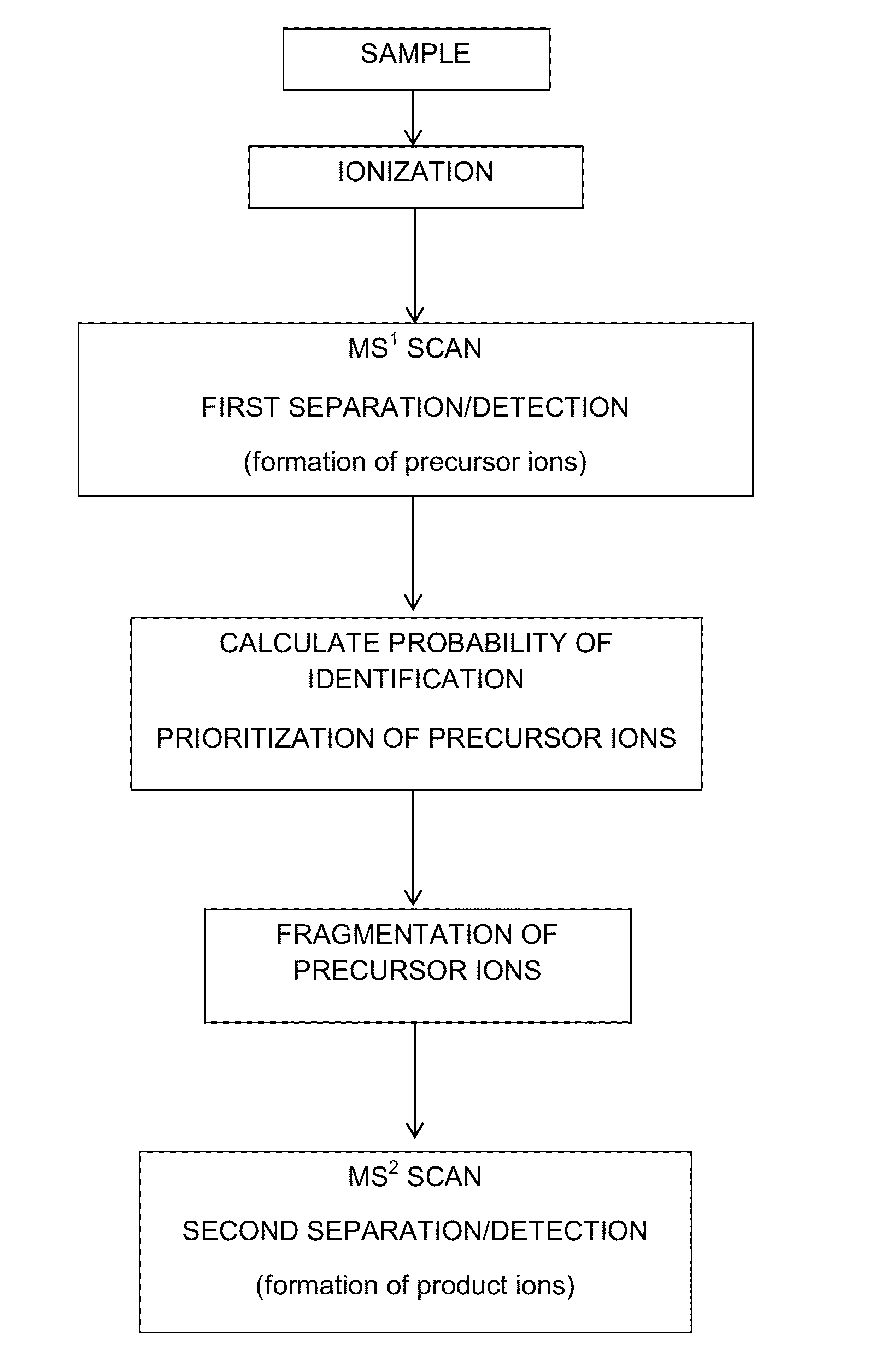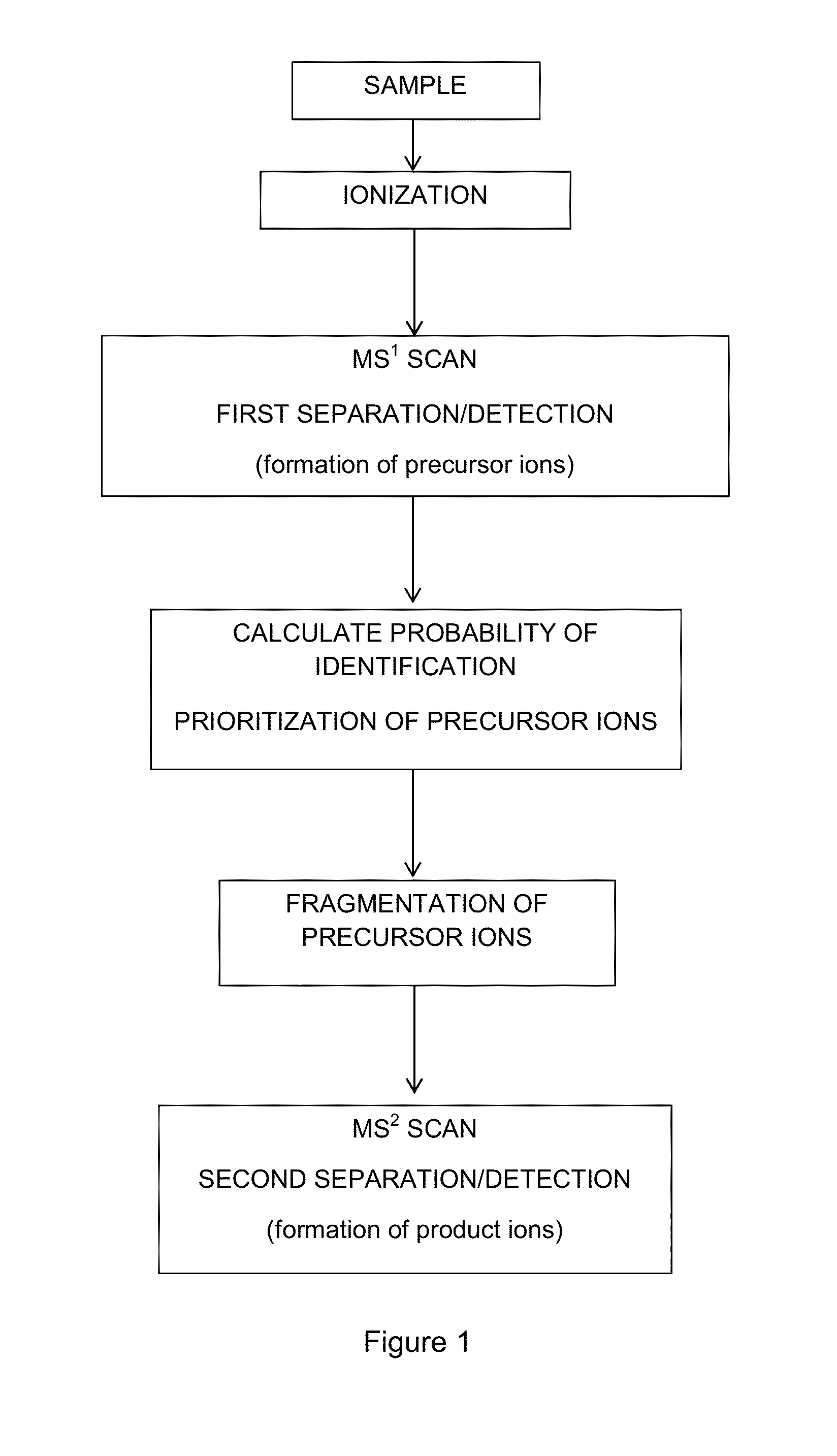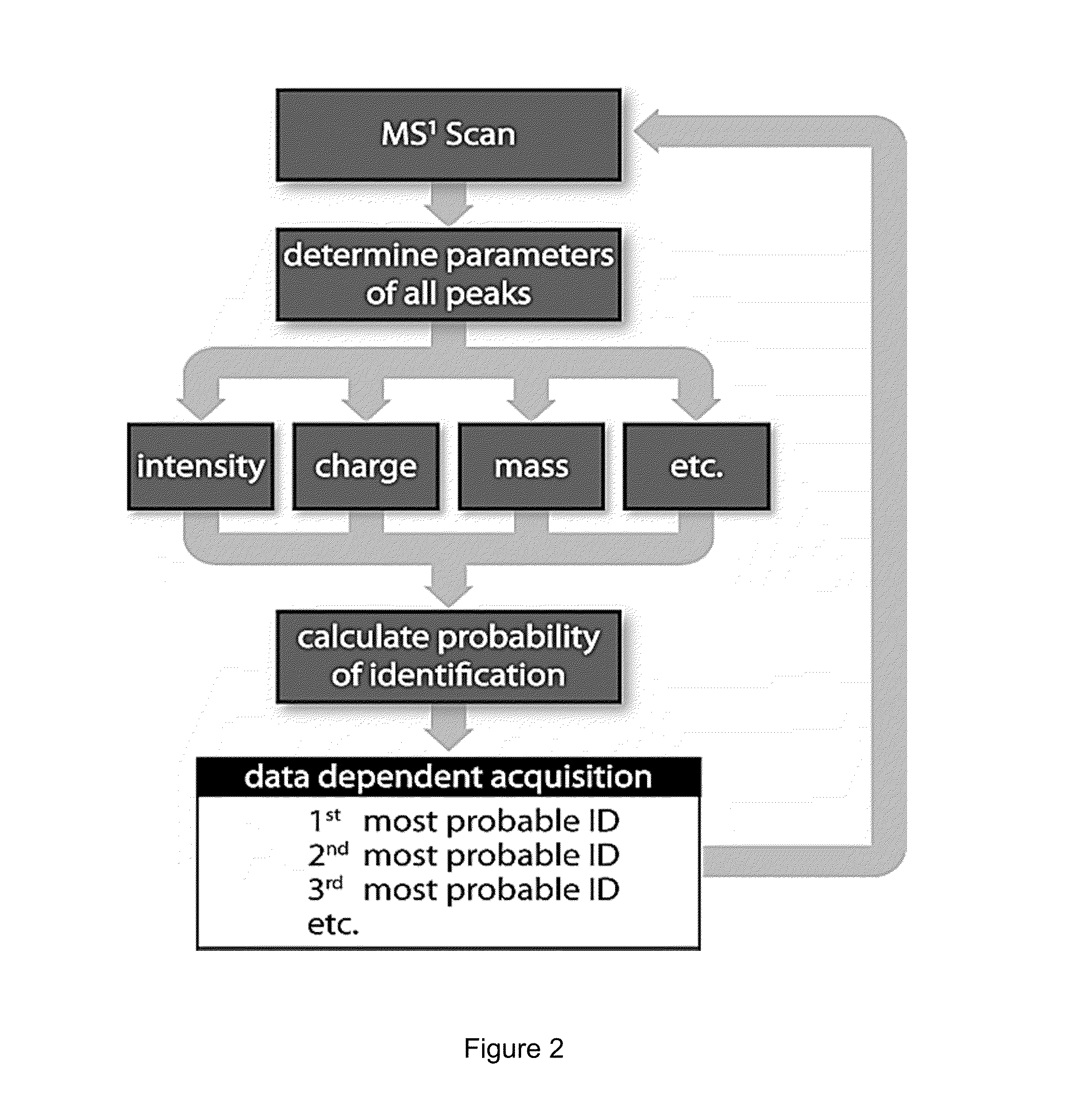Probability-based mass spectrometry data acquisition method for increased peptide and protein identifications
a mass spectrometry and data acquisition technology, applied in the field of mass spectrometry, can solve the problems of not all precursor ions can be selected for further analysis, successful identification of protein or peptide, precursor ions, etc., and achieve the effect of higher calculated probability of identification, and higher probability of novel identification
- Summary
- Abstract
- Description
- Claims
- Application Information
AI Technical Summary
Benefits of technology
Problems solved by technology
Method used
Image
Examples
example 1
[0058]Saccharomyces cerevisiae (Yeast) and human embryonic stem (ES) cells were grown, harvested, and then lysed by either French press (Yeast) or sonication (ES cells). Proteins reduced with dithiothreitol, alkylated with iodoacetamide, and digested with either Lys-C (yeast) or trypsin (ES cells) at 37 degrees Celsius overnight. Digested peptides were purified by solid phase extraction, dried to completion and resolubilized in mobile phase A (0.2% formic acid) prior to analysis.
example 2
Mass Spectrometry
[0059]All mass spectrometry experiments were carried out on a hybrid linear ion trap-orbitrap mass spectrometer (Thermo Scientific). Samples were separated via reversed phase chromatography (Waters, nanoAcquity UPLC) and coupled directly to the mass spectrometer via a nano electrospray ion source. All MS1 scans were detected in the orbitrap mass analyzer, which permitted real time determination of intensity, mass, and charge for each precursor. All MS2 scans were detected in the linear ion trap mass analyzer. LC-MS / MS experiments were approximately 120 minutes long.
[0060]For training runs, each duty cycle consisted of one MS1 scan followed by MS2 (CAD) of the ten most intense precursors. Dynamic exclusion was employed in order to reduce the number of redundant MS2 scans. To test the method, two types of analyses were performed: control and testing. The duty cycle of these experiments consisted of one MS1 scan followed by ten MS2 scans. For the control runs the MS2 s...
example 3
Database Searching
[0061]In order to identify peptides, the COMPASS software suite was used. This software suite identifies peptides by comparing MS2 spectra against a concatenated forward / reversed protein database (Saccharomyces Genome Database for yeast and Internal Protein Index for human). Results were ranked by expectation value and filtered to a 1% False Discovery Rate (FDR) based on the proportion of reversed to forward peptides identifications.
PUM
| Property | Measurement | Unit |
|---|---|---|
| time | aaaaa | aaaaa |
| tandem mass spectrometry | aaaaa | aaaaa |
| ion mass spectrometry | aaaaa | aaaaa |
Abstract
Description
Claims
Application Information
 Login to View More
Login to View More - R&D
- Intellectual Property
- Life Sciences
- Materials
- Tech Scout
- Unparalleled Data Quality
- Higher Quality Content
- 60% Fewer Hallucinations
Browse by: Latest US Patents, China's latest patents, Technical Efficacy Thesaurus, Application Domain, Technology Topic, Popular Technical Reports.
© 2025 PatSnap. All rights reserved.Legal|Privacy policy|Modern Slavery Act Transparency Statement|Sitemap|About US| Contact US: help@patsnap.com



